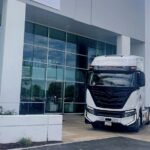Thirteen years ago, Forerunner ventures began to help raise a new era of consumer companies, including Warby Parker, Bonobos and Glossier. No one went through a traditional IPO process. Warby Parker was made public through a vehicle for obtaining special purposes. Bonobos was obtained by Walmart. Glossier is still held private, along with many other design forward brands in Virerunner’s portfolio.
According to Kirsten Green, founder of Forerunner, this is not a failure. In today’s landscape, almost every alternative to the traditional IPO has become the new norm.
Think about that companies such as Fintech Chime and Smart Ring Outfit ōura, founded in 2012 and 2013, were also early bets for precursor and achieved valuations north of $ 5 billion, proving their lasting power in crowded markets. But although Chime has filed confidentially to be public, ōura CEO said there are no immediate plans for a bursary trading.
At TechCrunch’s Strictlyvc night late last week, Green made it clear that she didn’t mind. Asked specifically if she was bothered by the CEO of ōura, Tom Hale, he repeatedly told the media the company was not to prepare a bursary proposal Despite strong sales, she calls the outfit a ‘phenomenal company’ outside the cards, and adds that ‘we have not even sold the thought around our table because we are here for the growth that happens. ‘
Instead, she suggested that investors adapted to a world with fewer conventional public offers long ago, including more and more to the once secondary secondary market to manage liquidity and exposure.
“We are working on the secondary market, buying and selling,” Green said of Forerunner’s team, which characterizes the shift as practical and strategic. “Companies have been waiting so long to become public. The business model is generally ten-year life cycles. If you now have to be a double-digit billion-dollar business to get a successful IPO or (traded) in the public markets, it takes time to get there.” The secondary market is to ‘continue with the industry’ and ‘to allow people to unlock returns and liquidity.’
For years of industry viewers, this is a remarkable shift. In the past, firms could expect a major liquidity event within a few years: an acquisition, a classic debut in the stock market. Yet the growing dependence on the secondary market is not just a response to public markets that scale and favor that are already performing well.
Another big advantage, Green suggested last week, is that price discovery is more effective if more participants are involved – even if it eventually means a discount on one of her transactions.
Green, for example, addressed emphasis, the Neobank who became a household name during the FinTech boom. Its valuation has zigzagged The past few years, from $ 25 billion in 2021, when it last closed a primary financing round of a small group of business investors, last year has a $ 6 billion valuation in the secondary market, which typically contains many more participants. More recently, it allegedly climbed to $ 11 billion again.
“In terms of prices,” Green said, “If you think about it, the round done is the series D, a negotiation between the company and ‘a Investor. With the secondary market you have more people in the mix, right? And then, if you (finally) go to the public markets, you all have the price for what they consider to be the value of a business.
Green can afford to be a little less invested, so to speak, in those later valuations. Although it is always nice to be associated with striking numbers, the firm’s strategy to get on the ground floor gives it more wrapping room than other business firms can enjoy. “We’re trying to be early,” Green said, pointing to the firm’s framework to identify major shifts in consumer behavior and link it with emerging business models.
It worked in early 2010s, when DTC brands like Bonobos and Glossier rode on the mobile social wave to be successful. It again worked with subscription first plays such as another forerunner, The Farmer’s Dog, which sells gourmet dog food and is reportedly profitable and seeing $ 1 billion to annual income. And that is what the firm now bets, focusing on the intersection of invention and culture, as Green describes it.
Large companies, Green noted, need time to develop and not all growth roads look the same. Dare capital, once eager for exits, learns to wait and, if necessary, get creative.
(You can listen to our conversation with Green sitting of the same HEREvia the strictlyvc download podcast; New episodes are published every Tuesday morning.)
(Tagstotranslate) Forerunner (T) IPO (T) Strictlyvc
+++++++++++++++++++
TechNewsUpdates
beewire.org










